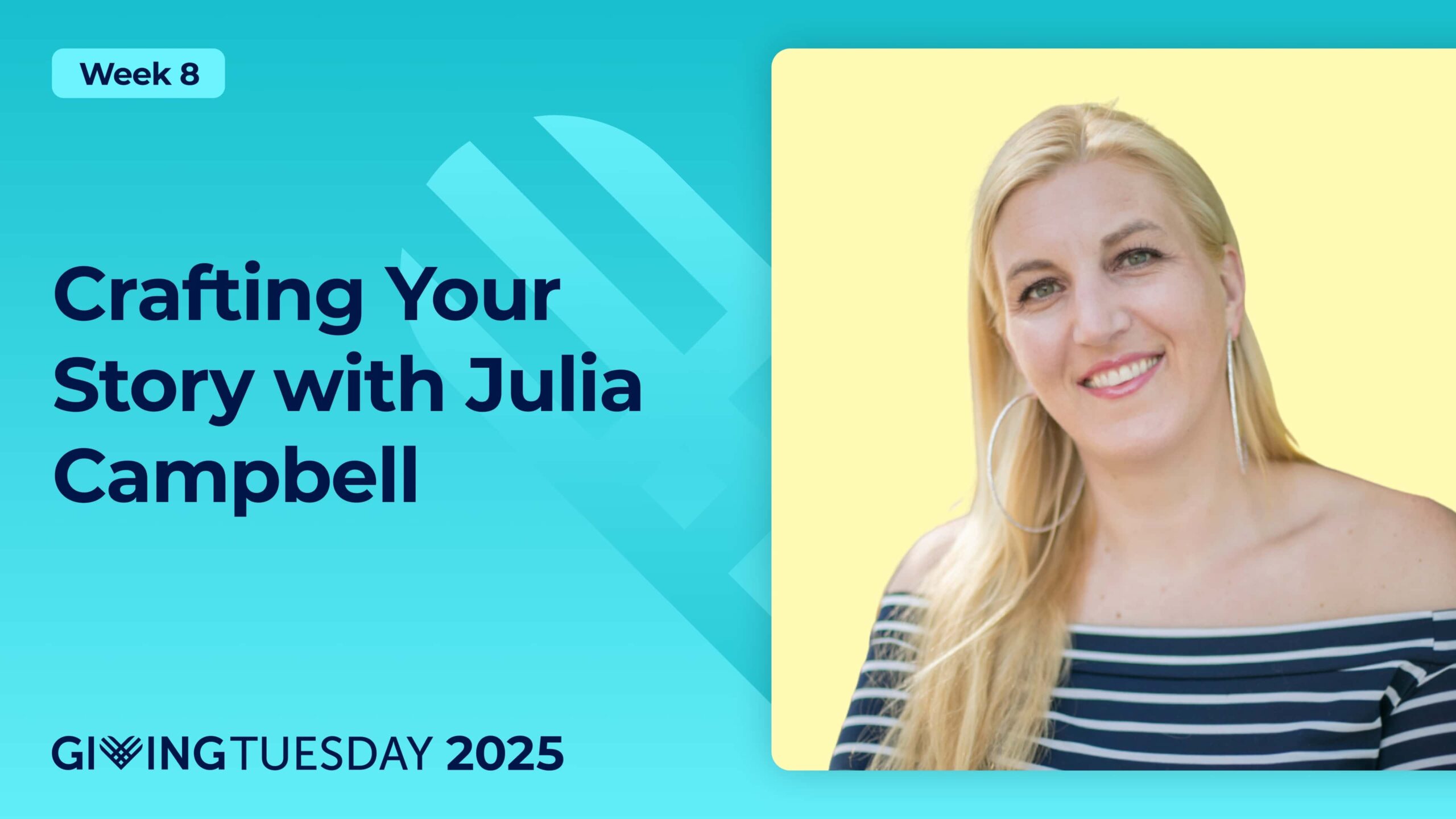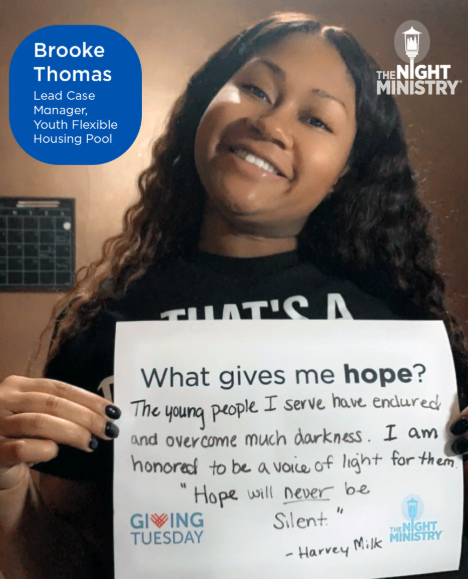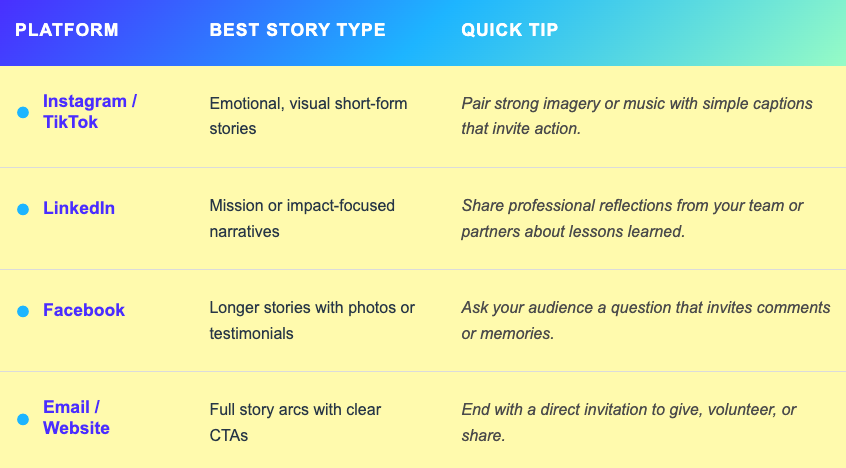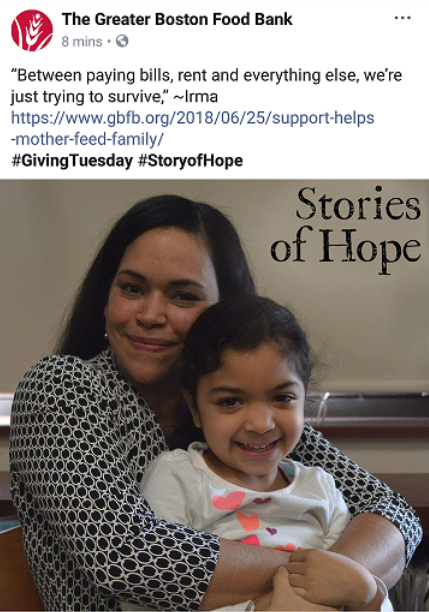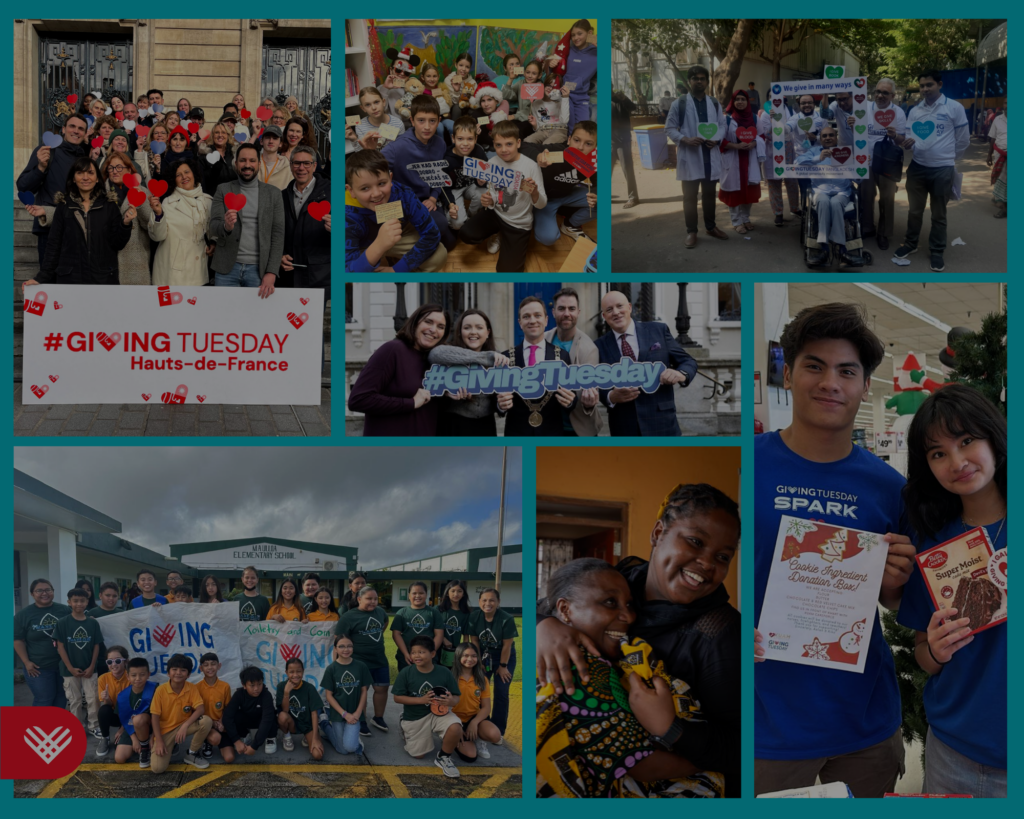Achieving success on GivingTuesday isn’t just about finding a story to share on social media. Success means being intentional about how your story makes people feel, and most importantly, what it inspires them to do.
As we count down the final weeks before December 2, let’s talk all things storytelling. Your organization’s stories have the power to do far more than raise money. They can build trust, generate curiosity and connection, and rally your community around a shared vision of the future.
This week, we’re focusing on how to share stories that go beyond simply educating people about your mission. You’ll learn how to craft narratives that connect emotionally, tailor them for different platforms, repurpose them across channels, and measure the kind of engagement that actually matters.
Why Stories Move People to Participate
Humans are hardwired for stories. We don’t remember statistics and data as much as we remember people — characters, conflict, emotion. When you highlight an individual’s journey, your supporters see their own values reflected in your mission.
Think about the difference between these two statements:
- “We served 500 families last year.”
- “When the Nguyen family lost their home in a fire, our team was there that same night with food, shelter, and hope.”
The second example invites empathy. It shows a transformation — the core ingredient of a powerful nonprofit story. As you prepare for GivingTuesday, focus on stories that demonstrate how generosity creates change.
Participation in your mission doesn’t always mean making a donation. It might look like sharing your post, volunteering, or even telling a friend about your cause. Every action begins with an emotional connection, and that’s what stories are designed to spark.
The Anatomy of an Effective Nonprofit Story
A captivating story isn’t just something your audience reads, it’s something they feel. It piques curiosity and stirs interest. Great nonprofit stories move people from passive observers to passionate participants.
At its heart, every compelling story has three elements: connection, challenge, and change.
1. Connection
Start by introducing a relatable protagonist, a real person, animal, or even a place that embodies your mission. Use sensory details and emotion to help readers see themselves in the story.
Think: “Meet Rosa, a single mom who dreamed of going back to school,” rather than “Our program helps adult learners.”
Your goal is empathy, not explanation. Invite your audience to care before you ask them to act.
2. Challenge
Next, show what was at stake. What obstacle or barrier stood in the way? This is where tension and urgency come alive, and where relevance is built. Make the problem clear enough that your reader feels compelled to help solve it.
A good story isn’t just “what happened.” It’s why it matters right now.
3. Change (and Call to Action)
Finally, show the transformation (no matter how small!). Stories do not have to be tied up in a bow, or end on a perfect note—that’s not reality.
Focus on the outcome, not the organization. What changed because people gave, volunteered, or shared? End with a simple, concrete action your reader can take to continue that impact.
“Because of supporters like you, Rosa graduated — and now she’s helping others in her community do the same.”
That’s the emotional payoff your audience is waiting for.
Here is how Boys & Girls Clubs of Boston shared a story of one of their members on GivingTuesday:
If you aren’t allowed to share client stories, consider featuring a staff member or intern. The Night Ministry often shares perspectives from the people who work there on GivingTuesday:
Match Your Story to the Platform
Each platform amplifies your story in a different way—the key is to match your format to your audience’s mindset.
Repurpose the same story by emphasizing a different detail or emotion on each platform. For example, a long story on your website can become a short quote graphic, a donor spotlight post, or a 30-second Instagram Reel.
No video? No problem. While video is consistently the most engaging form of social media content, your organization can use a compelling photo and caption, like the Great Boston Food Bank:
Repurpose With Intention
You don’t need dozens of stories for GivingTuesday, you just need one great one told in many different ways. Start with a single compelling story that captures your mission and values.
Then adapt it:
- Turn it into an email update.
- Record a short video or Reel.
- Create a quote graphic for Instagram.
- Post a reflection or “behind the scenes” update on LinkedIn.
Don’t be afraid to revisit the same story later with a “Where Are They Now?” follow-up. Supporters love seeing long-term change, and this deepens trust and connection.
charity:water masterfully shares the same story across channels, from its blog to email campaigns to social media. They first visited Helen Apio in 2009, and since that time have provided updates and shared her powerful story in multiple ways:
Measure What Matters
Choosing what to measure when it comes to storytelling can be challenging. It’s easy to see dollars raise after a specific email, but stories can be shared on so many different platforms in a wide variety of ways. How do you know what’s working and what to improve upon?
“Likes” and “impressions” can be helpful indicators, but they don’t show whether your story truly resonated. Focus instead on signs of depth:
- Comments that reflect emotional response (“This made me tear up!”)
- Shares or reposts
- Direct messages or replies
- Donations, volunteer signups, or event registrations tied to your story
Qualitative feedback—the emails, DMs, or real-world actions sparked by your story—often say more about impact than any dashboard ever could.
If a supporter says, “I read about the Nguyen family and it inspired me to donate,” that’s storytelling success.
From Inspiration to Action
As you plan your final GivingTuesday push, remember: you don’t need brand-new content for every platform, every day.
Start with one powerful story that shows the difference generosity makes, then repurpose it across every channel. Lead with emotion, keep your audience at the heart, and measure success by the connections you create—not just the clicks you collect.
Because when people feel your story, they don’t just listen/read/watch, they act!
Next Steps
- Revisit your best-performing story from this year.
- Identify three ways to share it across platforms.
- Track engagement beyond vanity metrics — look for emotion, action, and participation.


